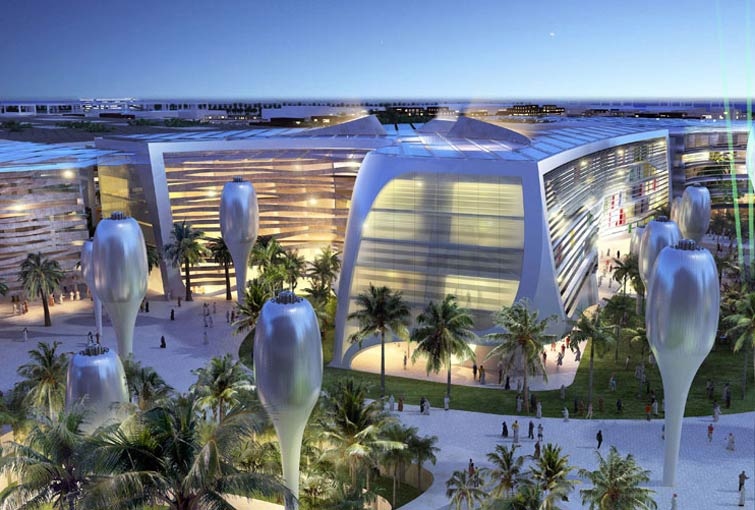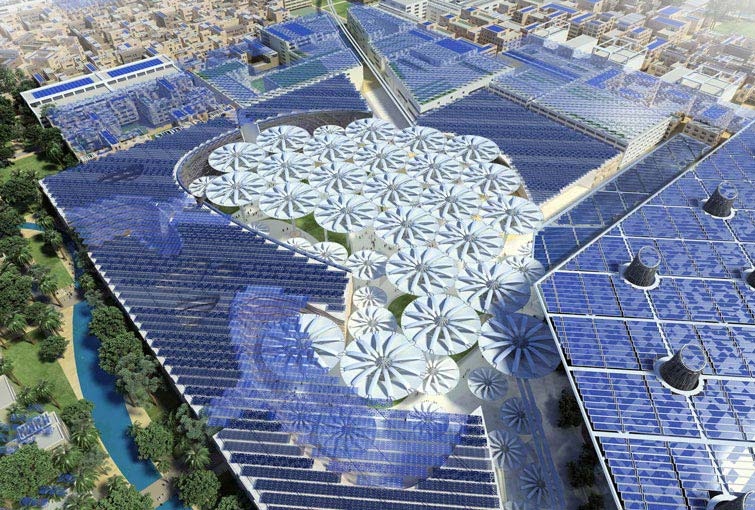
‘Competitions are never a gamble’: a chat with LAVA’s Chris Bosse
Share
Ahead of an appearance at the Business of Architecture and Design conference in Sydney on 11 November, Chris Bosse of LAVA speaks to Australian Design Review editor Elisa Scarton about managing a team across continents, dealing with industry disruptors and why architects love competitions.
You’re based in Sydney, but your fellow directors are based in Berlin and Stuttgart. How do you generate a single culture within the practice across the various locations? What leadership challenges have you faced working with studios in a different continent in comparison to say a traditional firm that may only have studios in Australia?
Who wants a single culture in their office? We live in the most multicultural and diverse time ever, and our offices reflect that. We even opened an office in Vietnam and have staff in Italy and Saudi Arabia. I think the cultural diversity creates a resilience and an awareness that we are not alone and not always right in the way we think.
But I know what you mean. How do you make people feel like they are part of the same team and share the same values? We frequently rotate staff around the globe to get them to experience life in different offices and we have a number of online tools and technologies to enable a 24/7 exchange. This is a blessing and a challenge at the same time when it comes to switching off and separating life and work.
What do you think will be the greatest disruptor to your industry over the coming years?
Artificial intelligence, robotic fabrication, autonomous vehicles and industry 4.0. The way we work, communicate, design and produce has changed dramatically in the past decade and will change over and over again.
Can you tell us about a LAVA project you would describe as a disruptor/innovator?
One classic LAVA project is the Masdar Plaza. We won the competition by turning the brief upside down and creating the first soft conditioned adaptive outdoor space in the UAE instead of an egg-shaped conference hall as the centrepiece of a sustainable city. Many others such as the UTS Tower skin and the Ethiopia Stadium followed.
The Masdar city centre is the world’s first eco city and includes a plaza, five-star hotel, a convention centre, entertainment complex and retail facilities. The entire area is designed as one continuous, spatial, interactive environment – a ‘loop’. The ‘Oasis of the Future’, a mediated outdoor space, is an open spatial experience, with solar-powered sunflower umbrellas.

Masdar Schematic Design, 2008

Masdar Schematic Design, 2008
The Business of Architecture and Design conference Great Debate topic is about competitions and whether they are good for architecture firms/cities. Why do architects love competitions?
We’re trained to compete and to defend our work to juries at university. We’re taught to work day and night and still get yelled at. I remember a crucial jury at a Swiss university where the French professor said to the winning student team: “This is far from being good architecture, but you made a good start.” We’re not taught about time and resources management or cost benefit analysis in our own practice.
A lot of architects liken participating in competitions as little more than a shot in the dark, a gamble that may or may not pay off. Is that how LAVA feels? Do you have strategies within your practice to mitigate the risks of entering a competition?
Competitions are never a gamble. You have to make sure you and your team benefit from every competition in multiple ways. Is it profitable? Is it an amazing learning opportunity? Can you design a typology outside your usual line of work (e.g. The Opera House)? Do you create new relationships? Do you develop your team spirit? Do you impress a potential client or do you just have mad fun doing it? A competition can be the opportunity to step beyond your means and abilities, and be free from daily rules and regulations.
I consider a competition a failure if we compromise, if we are unhappy with our own work, if we exhaust the team and haven’t learned anything. If we win it or not is a different story.
From a mental health perspective, competitions tend to be done late at night with pizzas and Red Bull. As a director, how do you address this? Architecture is already an industry with a lot of overtime. Are competitions worth disrupting the work/life balance even further?
The Austrian architecture faculty is actually sponsored by Red Bull! Generally, we try to avoid overtime and, in fact, you would rarely find the lights on at our office after hours. However, a competition unleashes new energies and motivation and often the team stays back to show its best. There is a very clear distinction between the Australian and international approach to work. This could have cultural roots, but it’s also what Sydney does to you, the sun, the surf, the sea. They make us very happy people. Does it also make us world leaders? I hope we can be both.
In Vietnam, all offices are open for work on Saturday morning , not so much to actually work, but to debrief and socialise. That’s means you get a great fresh start on Monday and are ready to go.
I walked past my old office building in Kreuzberg the day before Christmas at 11pm at night. And, sure enough, there was one floor brightly illuminated. On a beautiful, rainy, cold Sunday night in Berlin, where else would you rather be?
The Business of Architecture and Design (BoAD) conference is on in Sydney on 11 November.
Chris Bosse will be speaking at The Great Debate in Sydney’s Legislative Assembly Chamber alongside Bijl Architecture director and founder Melonie Bayl-Smith, Candalepas Associates director Angelo Candalepas, Carter Williamson Architects principal Shaun Carter, BVN principal and director Abbie Galvin and Dunn & Hillam Architects co-director Lee Hillam.
The inaugural BoAD is all about looking to the future. The architecture and design industry is evolving quickly and this conference has been designed to provide attendees with an agenda that will inform them of the changes that are taking place within the built environment – changes in technology, new business models and where investment is coming from and going to. It will provide business and practice leaders with key take-outs that can be applied to their planning whether they are leading a multinational or small local practice.
















